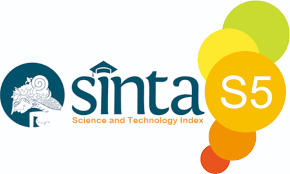LEARNING PRODUCING NEGOTIATION TEXT USING PROJECT BASED LEARNING METHODS IN X CLASS VOCATIONAL SCHOOL
DOI:
https://doi.org/10.22460/jler.v3i3.4778Keywords:
Produce, Text Negotiation, Based Learning ProjectAbstract
This research is entitled "Learning to Produce Negotiated Texts Using Project-Based Learning Methods in Class X Students of the 2019/2020 Academic Year". This research is motivated by learning to produce negotiation text in SMK. In general, not all students can produce negotiating texts. Only a few students can write negotiation texts, this is because students have different levels. Students find it very difficult to say what to write in producing a negotiating text. Therefore, students need production skills by grouping, making plans for completing project assignments and explaining material to produce negotiating texts by the teacher. The author formulates the following problems: 1) Is the project-based learning method effective in producing negotiating text for class X students? 2) Can project-based learning methods improve the ability of class X students in learning to produce negotiation texts? 3) Are there differences in students' learning abilities before and after using project-based learning methods in producing negotiating text in class X students? The method used in this research is the experimental method. The experimental method is used to determine the effectiveness of using project-based learning methods in learning to produce negotiating texts. The type of method used in this research is Quasi-Experimental (Quasi-Experimental) in the form of Nonequivalent control group design, where the effect or effect of a treatment is decided based on the differences in the results of the pretest and posttest on the experimental class and the control class. The research technique used in this research is a literature study, observation, and testing. The results of the difference in the mean value of the pretest and posttest proved an increase in the ability of the experimental class students by 78.55 in the initial test and the average score of the final test was 85.16 in producing negative texts. While the control class using the assignment method obtained an average score of 68.71 in the initial test and an average value of 71.61 in the final test. The data were processed using the Kolmogorov-Smirnov statistical test with the help of MINITAB 14 software. Based on the results of the study, there were differences in students' abilities before and after using the method, meaning that the project-based learning method was more effective than learning using the assignment method.
References
Alwasilah. (2005). Menulis menuangkan kata-kata ucapan. Jakarta: Kencana Media Group
Febrina, Nuansa A. & Isroah. (2012) “Peningkatan Aktivitas Belajar Akuntansi Melalui Implementasi Model Pembelajaran Kooperatif Tipe Student Teams Achievement Division (STAD) Pada Siswa Kelas X Ak 3 Program Keahlian Akuntansi SMK Batik Perbaik Purworejo Tahun Ajaran 2011/2012,†Jurnal Pendidikan Akuntansi Indonesia 10, no. 2.
Febrina & Isroah. (2012). Peningkatan Aktivitas Belajar Akuntansi Melalui Implementasi Model Pembelajaran Kooperatif Tipe Student Teams Achievement Division (STAD) Pada Siswa Kelas X Ak 3 Program Keahlian Akuntansi SMK Batik Perbaik Purworejo Tahun Ajaran 2011/2012.
Kosasih, E & K Endang. (2014). Jenis-Jenis Teks, Bandung: Yrama Widya.
Made, Wena. (2011). Strategi Pembelajaran Inovatif Kontemporer: Suatu Tinjauan,†Konseptual Operasional. Jakarta: PT. Bumi Aksara.
Sugiyono. (2010). Metode Penelitian Kuantitatif dan R&D. Bandung: Alfabeta.
Sutirman. (2013). Media dan Model-Model Pembelajaran Inovatif. Yogyakarta: Graha Ilmu.
Tim Redaksi, “Kamus Besar Bahasa Indonesia,†Jakarta: PT Gramedia Pustaka Utama, 2008.
Warsono, H. & M. S. Hariyanto. (2012). Pembelajaran Aktif Teori dan Asesmen. Bandung: PT Remaja Rosdakarya.






